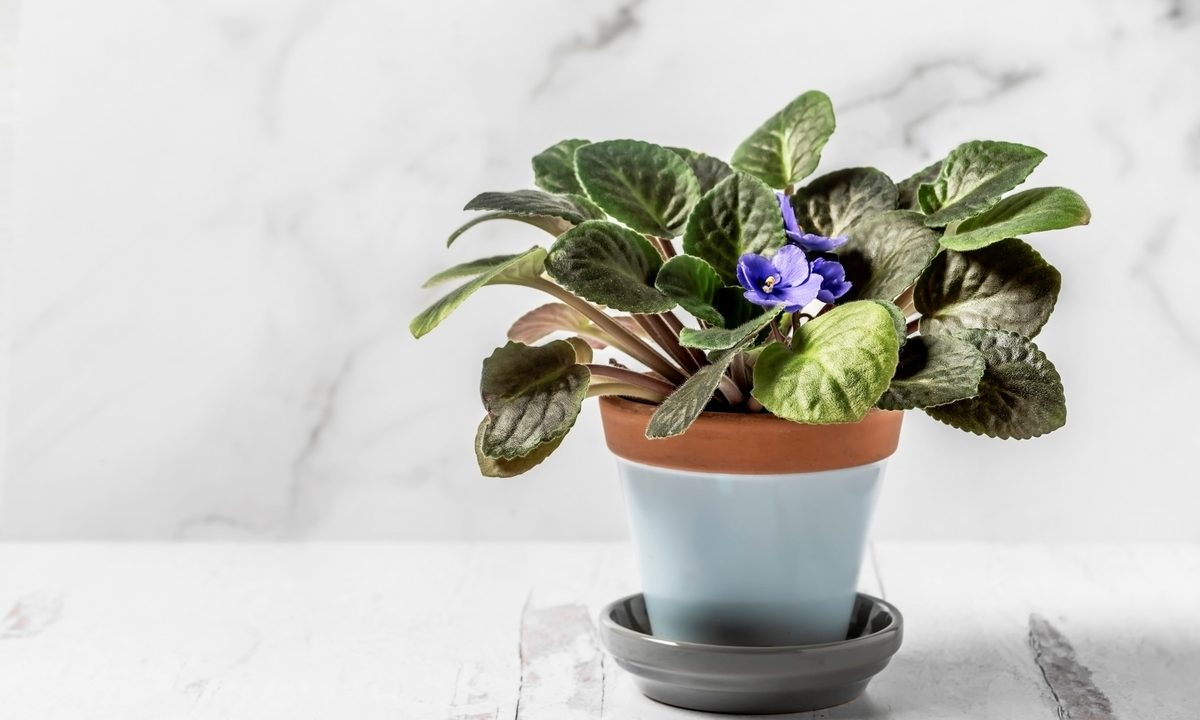Houseplants provide plenty of benefits, including stress relief and general mood improvement, but they can take up a lot of space. That’s unfortunate, since if you’re living in a small space, you likely need the stress-relieving properties of plants even more! Luckily, there are some small indoor plants that don’t need a lot of room. These plants are perfect for apartments and dorm rooms. Whether you prefer colorful flowers or simple greenery, one of these small indoor plants is sure to satisfy your plant craving!
Inch plant
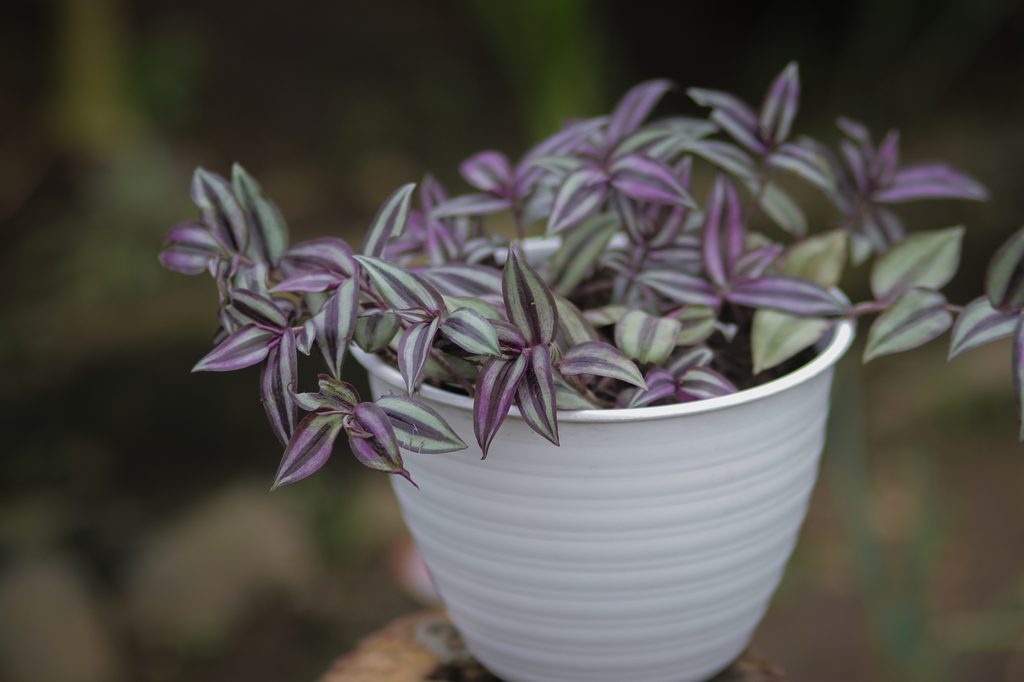
Inch plants, also called Tradescantia zebrina, are perfect if you’d like a plant that stays small, but one that won’t make you wait ages for it to grow fully. Inch plants grow quickly and only take a few months to reach their mature size. However, that mature size is fairly small, typically between 6 and 8 inches. It will grow wider if allowed, but trimming will keep it from getting out of control. Additionally, inch plants are ideal for people who want a pop of color but can’t have flowers due to allergies, as the leaves of the inch plant are a lovely shade of purple. For the best results, place your inch plant in bright, indirect light and water it regularly.
Echeveria
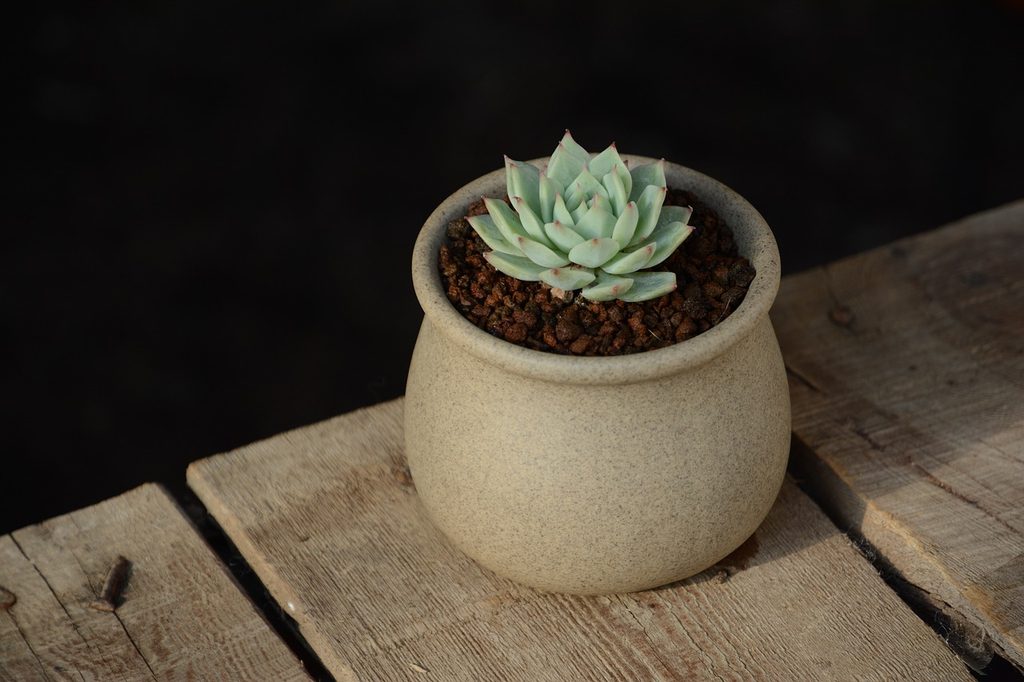
Echeveria is a popular succulent, and while some varieties can grow quite large, most stay small. They’re easy to care for and make excellent desk or windowsill plants. They grow slowly, so even if you choose one of the larger varieties, you’ll some time before you need to worry about moving it to somewhere with more space.
Additionally, they’re easy to propagate, which is great news if you want to grow a whole host of them or give your friends echeverias of their own. Place your echeveria in your sunniest window and water it when the soil dries out. Be sure the container has good drainage to avoid accidentally overwatering it.
African violets
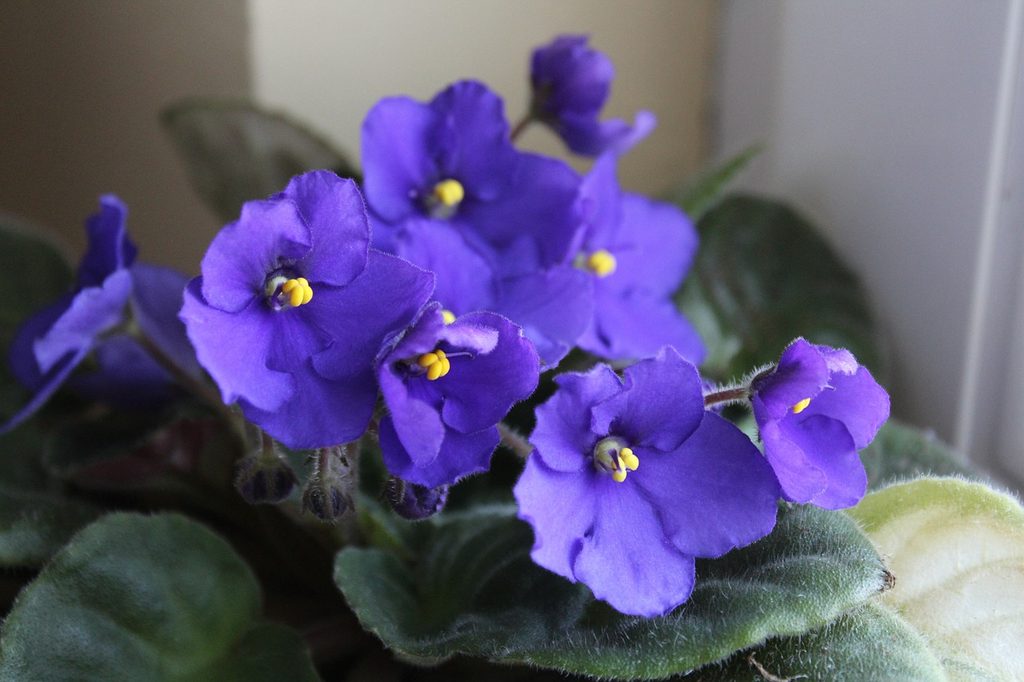
If foliage isn’t quite what you’re looking for, then African violets might be the right plant for you. While the leaves on this plant are quite nice, with their dark green color and fuzzy texture, these plants are best known for their flowers. Ranging from dark purple to light pink, African violets are easy to grow and lovely to see.
Typically growing between 6 inches and 1 1/2 feet tall, these small indoor plants are perfect for desks, windowsills, or shelves. Place your African violet in bright, indirect light for the best blooms and water it whenever the soil is dry.
Peperomia
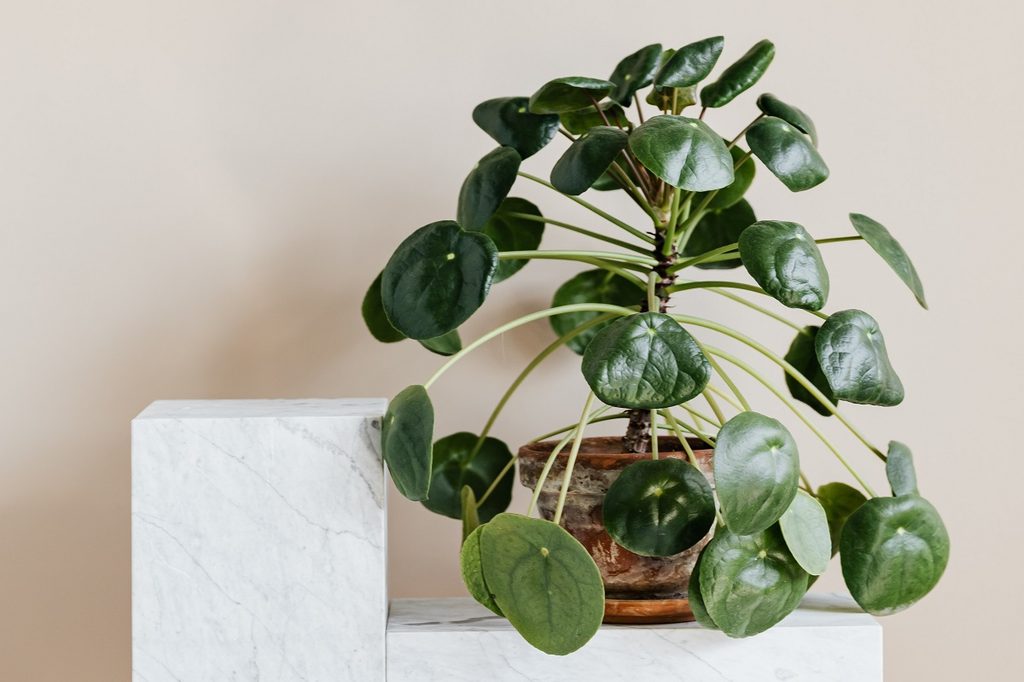
Peperomia is a versatile and adaptable plant, and it comes in an assortment of sizes and shapes. From the tiny, disk-shaped leaves of Peperomia obtusfolia to the variegated species such as Peperomia albovittata, there’s a peperomia variety to match any aesthetic. The mature size can vary depending on the species you have, but they typically only grow to between 6 and 10 inches tall.
Peperomia can tolerate some shade and low-light environments, but they thrive in bright, indirect light. They are semi-succulent plants, meaning they store water well and are sensitive to overwatering, so only water your peperomia when the soil is dry.
Kalanchoe
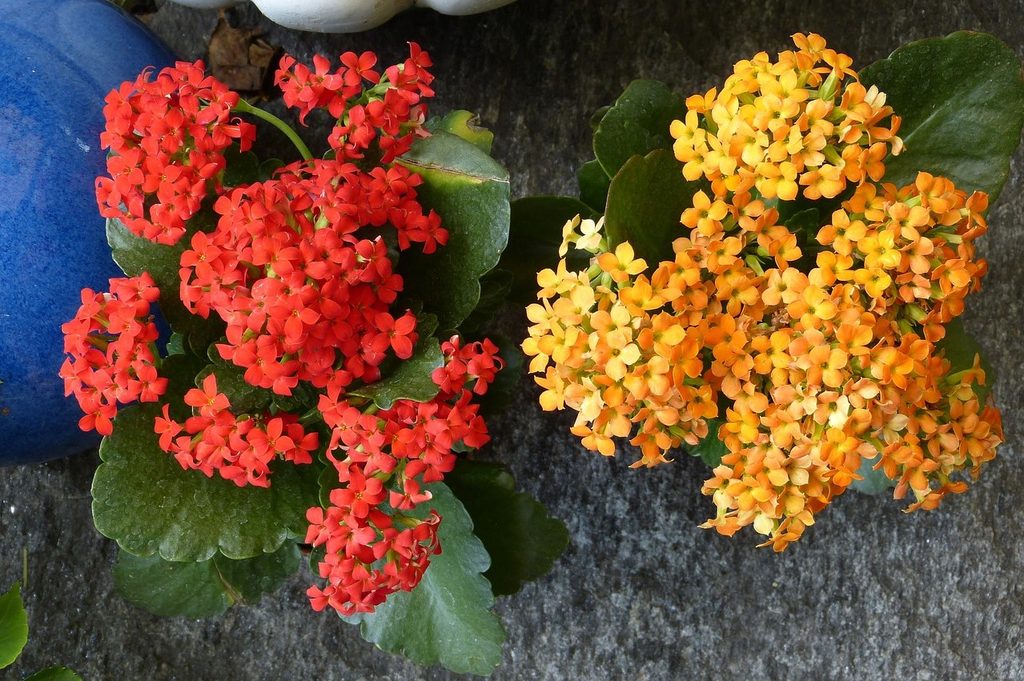
Kalanchoe is a tropical succulent known for its bright and beautiful flowers. The most commonly grown kalanchoe species is Kalanchoe blossfeldiana, also known as florist’s kalanchoe. However, there are other species you could find online or in certain nurseries.
Mature kalanchoe plants are around 1 foot tall when blooming and a few inches shorter when not in bloom. With bright flowers that come in almost every color, kalanchoe is the perfect small indoor plant for anyone craving a bit of cheer. To keep your kalanchoe happy, place it in bright, indirect light and water it whenever the top couple inches of soil are dry.
Orchid
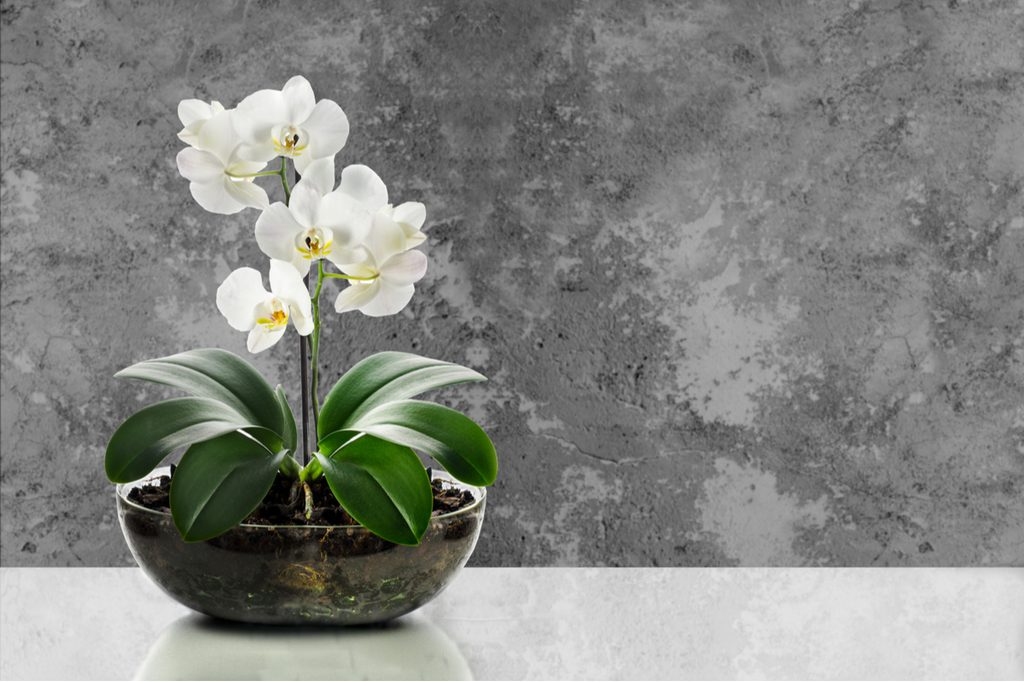
If you’re looking for something that’s a bit more of a challenge, then orchids are the way to go. They are elegant and dainty and don’t take up much room. Orchids are great for desks, windowsills, and shelves, and they’re a great way to add a sophisticated vibe to any small space. Orchids vary in size, but they typically grow to between 1 and 3 feet tall and less than 1 foot wide. The trick to growing orchids is to choose a species that fits your living conditions, as some orchids prefer bright sun and others do best with shade.
These six small indoor plants are a great place to start if you’ve longed for a leafy companion. While living in a small space can be uncomfortable and stressful, having a small plant can make it just a bit better. Whether you prefer the lovely flowers of a kalanchoe or the elegant leaves of a peperomia, adding one of these small indoor plants to your home can make it a more relaxing place.
